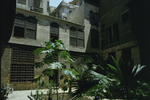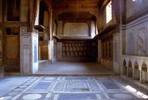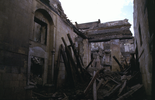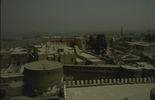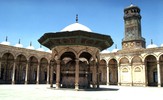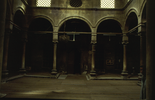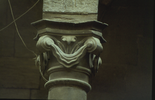Previous Lecture | Next Lecture
Concepts
The French Expedition: (1789-1801) An imperial enterprise led by Napoleon Bonaparte, it ushered the age of Westernization and modernization into Egypt. Along with the army, Napoleon recruited scholars and engineers who systematically collected, classified, and represented all available material on the history, geography, and culture of the country. Their work, which formed the basis of the modern knowledge of Egypt, was published as the Description de l'Egypte (1809-28) in nine volumes of text and fourteen grand volumes of illustrations.
Muhammad `Ali Pasha: Semi-independent ruler of Egypt from 1805 to 1848, he established a dynasty that lasted until 1952. Muhammad 'Ali started the transformation of Egypt into a modern state that challenged the Ottoman Empire and threatened the European powers' designs for the Middle East. His descendants, later called the Khedives, were not as farsighted as he was and they eventually lost even Egypt's independence, which became a British colony in 1882.
Pascal Coste: French architect who, between 1817 and 1827, worked for Muhammad `Ali first as the designer and supervisor of large engineering projects and later as an architect of palaces and commemorative structures. His book, L'Architecture Arabe ou Monuments du Caire mesures et dessines de 1818 a 1826 (1837), offered the first visually comprehensive and typologically codified analysis of important Islamic monuments in Cairo.
Musafirkhana Palace: (1779-1888) The guest house of Muhammad `Ali and his immediate descendants, this palace is a grander version of the Suheimi house and the last specimen of a tradition of princely houses that have lasted from the Ayyubid period until the early 19th century.
Sabil-Kuttab of Tusun Pasha: (1820) A heavily decorated round-fronted sabil with two kuttab rooms on either side. It was built in memory of Tusun Pasha, Muhammad `Ali's oldest son who died in 1816.
The Bijou Palace and the Palaces of the Harem: (1824 and 1826) Built as royal residences and offices at the Citadel, they follow the familiar theme of Ottoman palace organization, which divides the structure into a salamlik (men's quarters) and a haramlik (women's quarter). Their surface articulation, heavily copied from European Baroque, is a testimonial to the strength of European styles in influencing the taste of the Pasha of Egypt and his whole court.
The Mosque of Muhammad `Ali, Cairo Citadel: Begun in 1830 and not finished until after the death of Muhammad 'Ali in 1848, it stands at the highest point of the Citadel and is visible from almost every location in Cairo. The mosque, which is a pure central-domed plan, has two slender pencil minarets that soar to a height of 82 meters. The interior is articulated in a neo-baroque style that contrasts sharply in its profusion and eclecticism with the structural straightforwardness of the mosque. The mosque is a rhetorical composition designed to emulate the early style of royal Ottoman mosques of Istanbul.
The Mosque of Suleiman Agha al-Silahdar: (1837-39) Built by this trusted lieutenant of Muhammad 'Ali on the main street of Cairo, this elegant mosque displays the same mixture of Baroque Ottoman and local Cairene styles as the mosque of the Pasha at the Citadel.
Monuments


